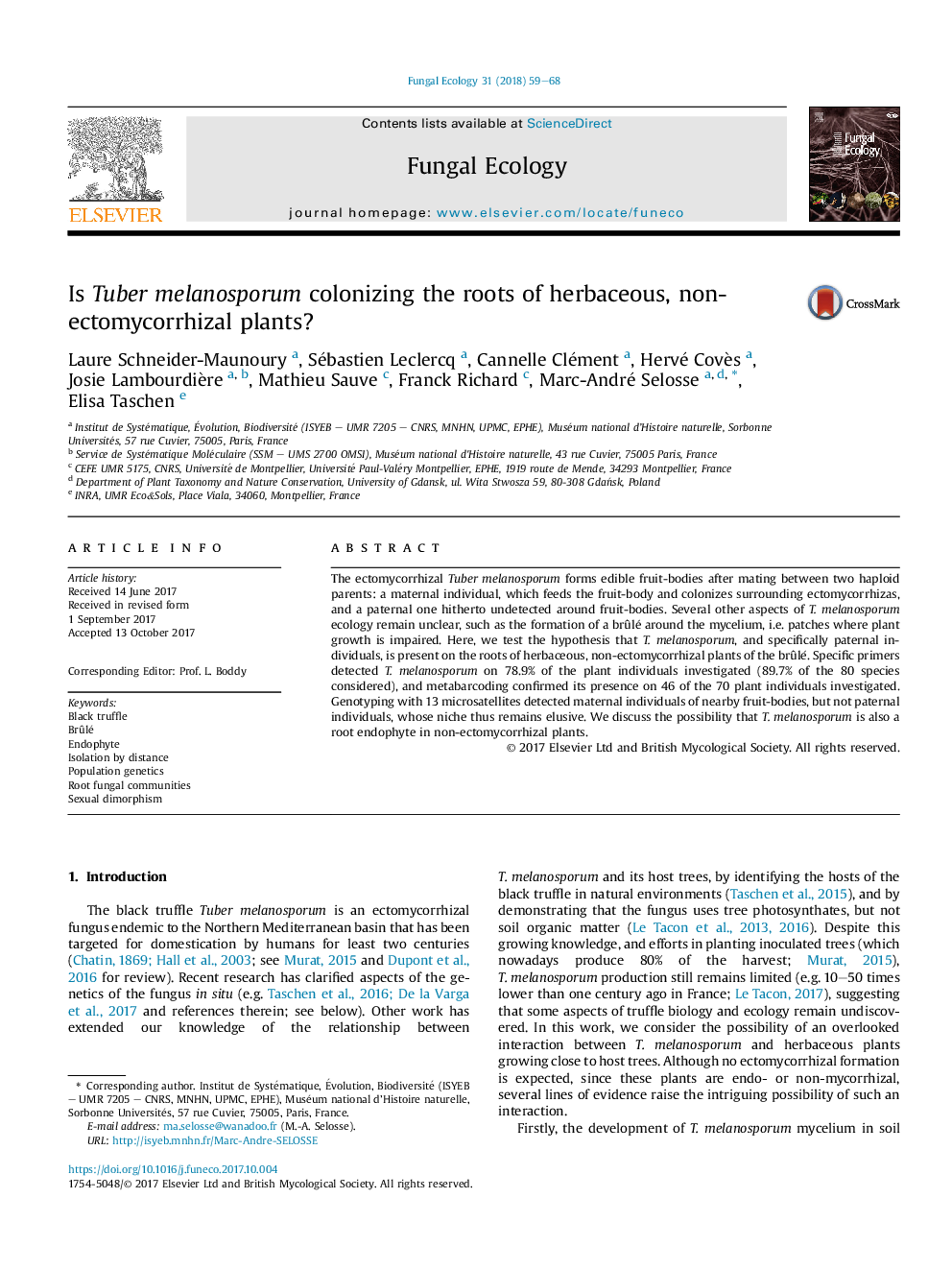| Article ID | Journal | Published Year | Pages | File Type |
|---|---|---|---|---|
| 8384271 | Fungal Ecology | 2018 | 10 Pages |
Abstract
The ectomycorrhizal Tuber melanosporum forms edible fruit-bodies after mating between two haploid parents: a maternal individual, which feeds the fruit-body and colonizes surrounding ectomycorrhizas, and a paternal one hitherto undetected around fruit-bodies. Several other aspects of T. melanosporum ecology remain unclear, such as the formation of a brûlé around the mycelium, i.e. patches where plant growth is impaired. Here, we test the hypothesis that T. melanosporum, and specifically paternal individuals, is present on the roots of herbaceous, non-ectomycorrhizal plants of the brûlé. Specific primers detected T. melanosporum on 78.9% of the plant individuals investigated (89.7% of the 80 species considered), and metabarcoding confirmed its presence on 46 of the 70 plant individuals investigated. Genotyping with 13 microsatellites detected maternal individuals of nearby fruit-bodies, but not paternal individuals, whose niche thus remains elusive. We discuss the possibility that T. melanosporum is also a root endophyte in non-ectomycorrhizal plants.
Related Topics
Life Sciences
Agricultural and Biological Sciences
Ecology, Evolution, Behavior and Systematics
Authors
Laure Schneider-Maunoury, Sébastien Leclercq, Cannelle Clément, Hervé Covès, Josie Lambourdière, Mathieu Sauve, Franck Richard, Marc-André Selosse, Elisa Taschen,
